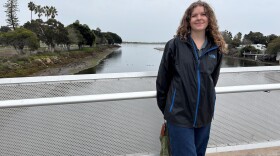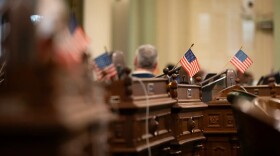Marianna Moncreiff is a math teacher now. But when she started college in the United States, she was put in a remedial math course.
"Even though I knew the math, I could not pass the test because I didn't know what the questions were," Moncreiff said.
Born in Slovakia, now she's teaching students from all over the world at Hoover High School in City Heights. About 30 percent of the student body there is learning to speak English. Another 50 percent, like Moncrieff, speak it as a second language.
Also like Moncreiff, a lot of them are pretty good at math.
"Before I show to my students how to solve problem, I ask my students first to come to the board to show me how they do it in their country," Moncreiff said. "Most of the time, it's exactly how I learned in Slovakia. And I get very excited about that because I can support them in that. I know they're not doing anything wrong.
"And in some cases students show me ways I haven't seen before. I learned from my students how to divide fractions in a way I haven't seen before, and later I saw it in our new textbook."
This year, Moncreiff and her colleagues are meeting after school each week to pore over worksheets and tests. They're dissecting the language both they and their students used in questions and answers. The goal is to find and fix the things that might land English learners in a remedial math class they don't need.
Recently, it was a word problem on slope. A steep line on a graph shows miles travelled by bike. Students were asked what it means when that line flattens out. Hint: the cyclists took a break from riding.
"Here he says, 'They are going same miles,'" Moncreiff read aloud to her colleagues. "Like I said, sometimes the students cannot express themselves really clearly, so just that one sentence tells me a lot. When he said 'same miles,' he kind of recognized that we were still around the 20-mile mark."
Moncreiff may have understood the answer, but Bill Zahner, who’s leading the effort, pointed out it might not be good enough on a standardized test.
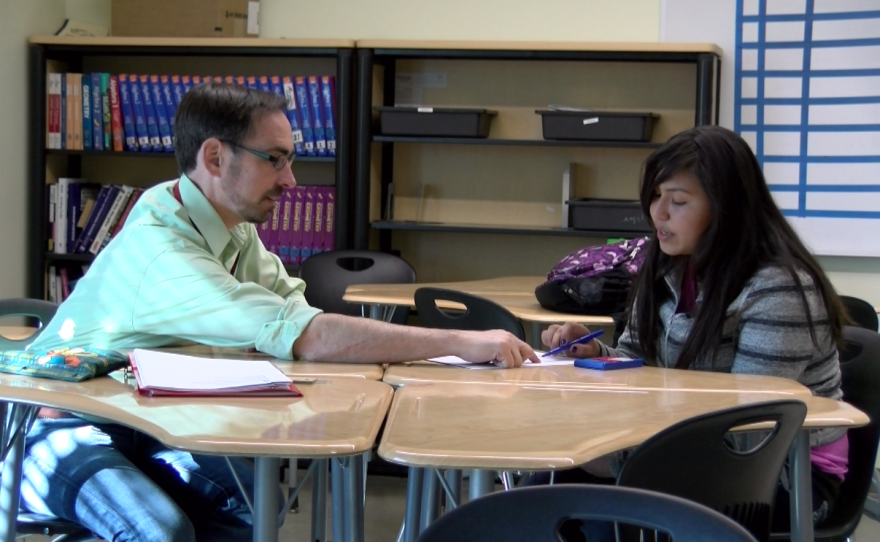
"Think about these answers as giving you insight into what students know and then building on that. 'Going the same miles. I think what you mean is the distance is not changing.'" Zahner suggested Moncreiff say to the student. "There's this idea of giving the students both the credit for coming up with this mathematical explanation and giving them the words to express that in a way that would get them credit on another test."
Zahner is an assistant professor at San Diego State and a researcher in the school's Center for Research in Mathematics and Science Education. He's studying the intersection of language and mathematics with a grant from the National Science Foundation.
"We think that mathematics is a universal language. That's the pretty common assumption, right? One plus one is two, it doesn't matter where you are," Zahner said. "But as soon as you ask someone to explain,or justify, or to create an argument, or to define something, now you've put a linguistic demand on the mathematics."
Take a common answer on the word problem about the cyclists.
"One of the questions was, 'What happened on this graph between 11:30 and 12:00?' and there's a horizontal line. And a lot of the students said, 'They stopped for lunch.' And then there was 'explain,' and the word 'explain' was implying, 'Give me a mathematical explanation in terms of the graph that you're looking at,'" Zahner said. "And a number of students wrote, 'Well, usually you eat lunch at 11:30.' And it's an example of an accurate answer but not the one that was intended."
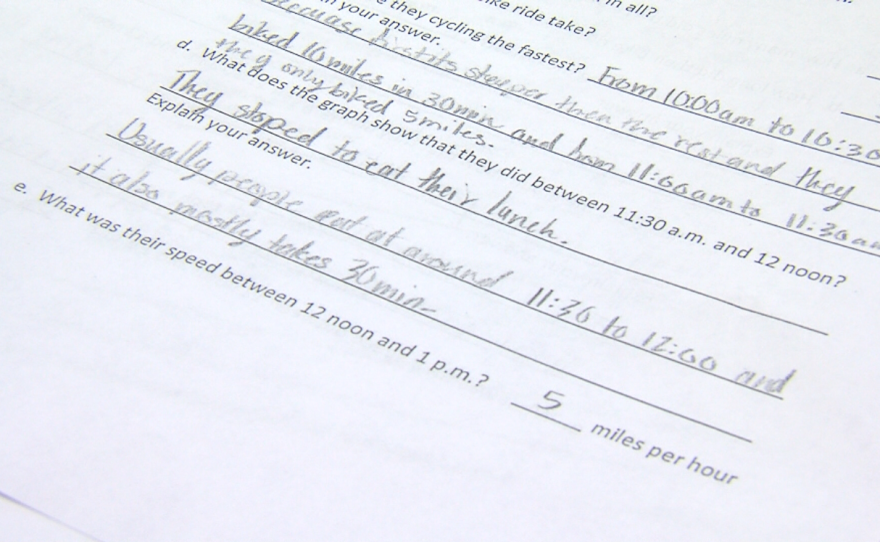
Zahner and San Diego teachers will spend the next four years trying to find these overlooked pitfalls. They'll discuss how to overcome them and then present their findings to educators and textbook publishers statewide.
Zahner is careful to say the effort isn't about watering down the math. He said questions should remain mathematically complex. "What you want to be careful for is unintentional complexity, when you don't know something is causing confusion," Zahner said.
And he said often the fix might just be a discussion in class — not a rewrite.
"I think there's a big debate: Do you try to take all of the language out reduce the language demands? And the example I always think of is Ikea directions," Zahner said. "There's no language in the Ikea booklet except if you look at the very first page. If you get confused you’re supposed to call them, which tells me that when there's something complex happening, you need to talk about it."
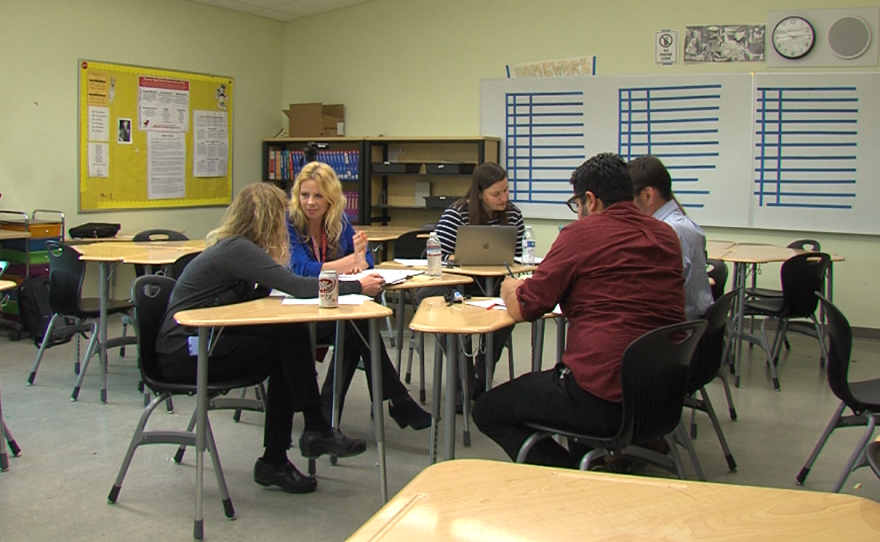
And Zahner added that conversation might help more than just English learners.
"Thinking of things like curb cuts in the sidewalk, which are put in place so that people who have wheeled mobility devices can get around. But it actually creates whole new opportunities for using that space, and now everybody has wheeled suitcases," Zahner said. "So a really clear explanation that an English learner is able to understand may also be a very clear explanation for a student who is not an English learner."
Math teacher Moncrieff said the effort has already helped her tap into the talents of her English learner students.
"My students come to class and they want to work," she said. "I have not had class where my students come and they don't have homework. They do homework, they ask questions. It's just wonderful."
Countywide, there are more than 100,000 English learners who, like Moncrieff, just might be math teachers in the making.




